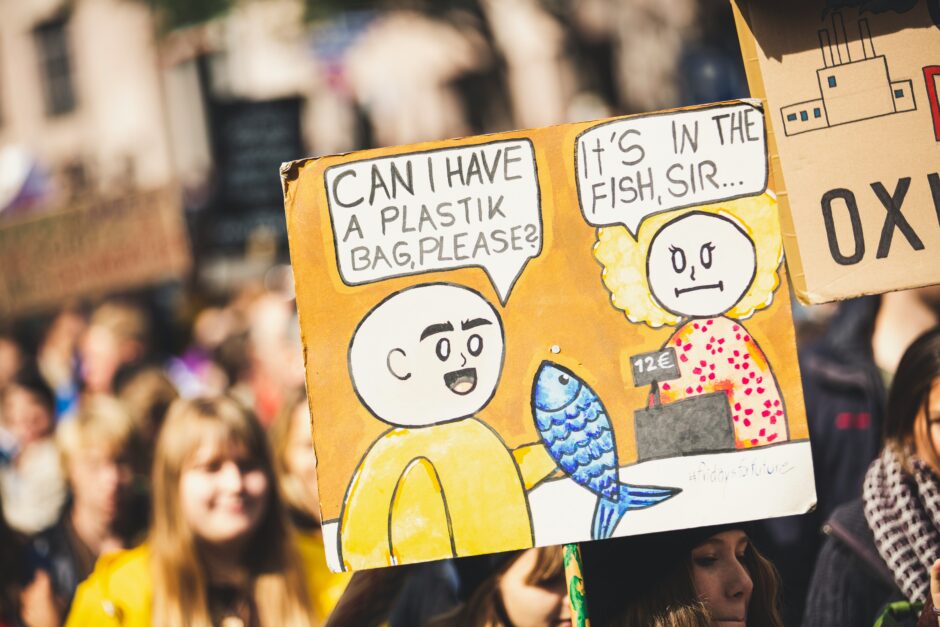The urgency of the climate crisis is escalating, demanding immediate action to mitigate the detrimental effects of human activities on the environment. It is clear that the need for collective effort is essential, requiring not only the involvement of governments and large corporations, but also the active participation of individuals. Despite this, motivating individuals to engage in environmental efforts in order to reduce their own negative impacts on the climate remains an issue. This is often attributed to an ‘information deficit’, meaning that a lack of information about climate change is the cause of inaction from people. If that was true, a behavior change would occur once people understand the specifics of the climate crisis. However, this idea is often refuted. Even though many people are well aware of the gravity and urgency of the climate crisis, they still remain hesitant to change their behaviors. As a result, the approach to communicating climate change has undergone a significant transformation. Rather than merely disseminating facts and data, the focus of climate change communication has pivoted towards engaging with individuals on a more personal level. The shift acknowledges that the challenge is not simply the lack of information, but rather the manner in which this information is conveyed. The question then arises: How do we craft climate change communication in such a way that it actually contributes to individuals’ behavior change?
Research has found that emotions form a powerful motivator for behavioral change, highlighting the crucial role emotions play in how we process factual information. Climate change communication can either tap into negative or positive emotions to foster behavior shifts. Through pessimistic narratives about climate issues, a sense of fear can be evoked. These narratives center around the idea of a total collapse of the environment, around themes such as loss of biodiversity, pollution and its disastrous consequences for human lives and the life of the earth. Such ‘doom and gloom’ messages, emphasizing the threats of climate change and the catastrophic consequences of inaction, are designed to drive behavior change through negative emotions. While these pessimistic messages work well in increasing people’s attention for climate change issues, fear is usually ineffective in actually motivating individual engagement and action. Pessimistic forms of communication can lead to a sense of paralysis, as if there is nothing to do anymore. This form of communication may result in feelings of being overwhelmed and disempowered, the consequence is often a sense of climate change fatigue instead of the intended spark of motivation to take action.

If pessimistic climate change communication has a limited effect on actually inducing a behavior change in people, perhaps a more optimistic approach could better drive climate action. Optimistic messaging on climate change focuses on inspiring hope by showcasing progress, solutions to the climate crisis, and examples of successful initiatives. This method seeks to encourage behavioral shifts by creating feelings of hope, empowerment and belief in individual ability to make a positive impact. However, the issue with optimistic messaging is that it can lead to a false sense of optimism and the idea that the negative consequences of climate change will not be too severe. This perception risks leading to inaction once again, as it might convey the impression that individual changes are unnecessary if the climate crisis appears manageable.
Therefore, the challenge in climate change communication is to balance pessimism and optimism: how can we highlight the severity of the crisis while still inspiring hope? Negative emotions can create a heightened sense of urgency and perception of climate change risks. However, a sole focus on the negative impacts of climate change without attention for solutions is likely to result in public disengagement. By combining a focus on the gravity of climate change issues with solution-oriented messaging, this disengagement or paralysis can be prevented. This type of messaging aims to communicate a realistic vision of the problem, as well as pathways to a more sustainable future, thus minimizing the downsides of both optimistic and pessimistic climate change communication.
The role of factual information remains crucial. Access to accurate information about developments within climate change might not be enough to inspire individual action, but it helps reducing the negative consequences associated with climate change communication that leans towards extreme optimism or pessimism. Therefore, effective climate change communication should blend ‘informed optimism’ with ‘informed pessimism’. Given the pivotal role of emotions in understanding information, it is vital that climate change communication conveys different emotions, yet it is equally important to approach this cautiously. Both paralyzing fear and a false sense of hope generally do not motivate individual behavior change. Climate change communication thus faces the difficult task of finding a balance: just enough pessimism to gain attention for the seriousness of the issue, but also just enough optimism to spark hope.



